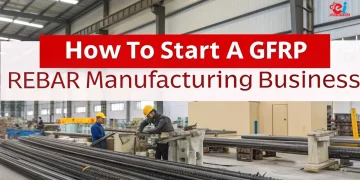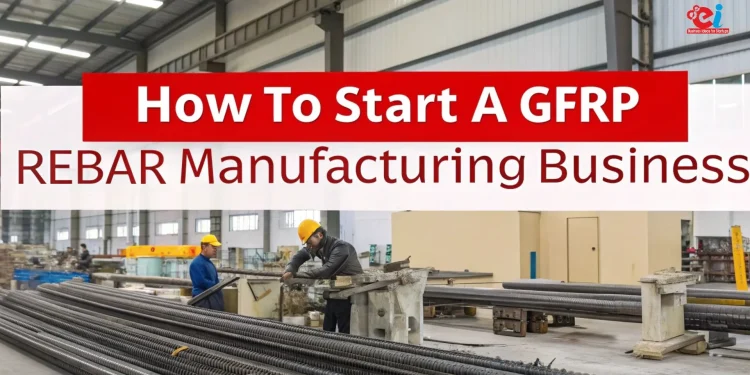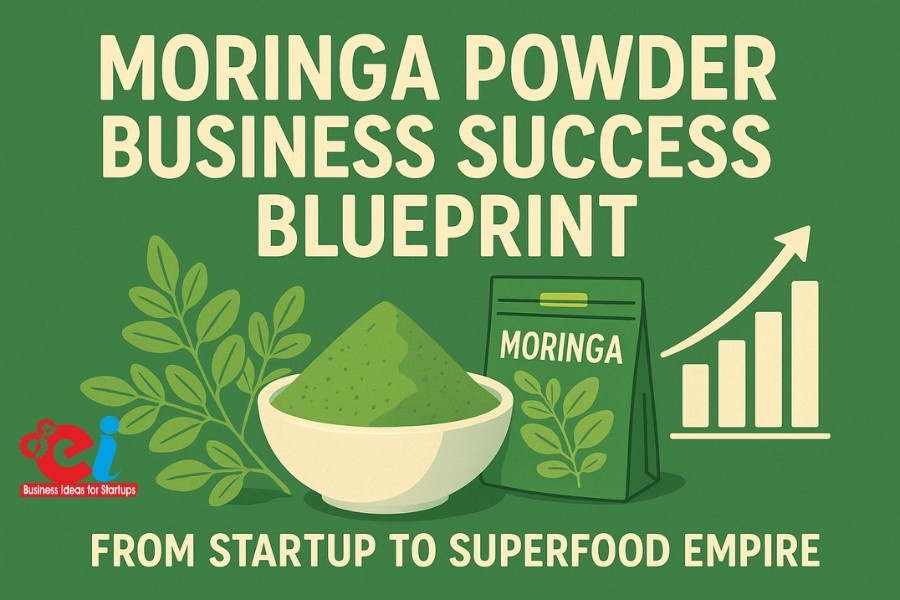The Possibility in Changing Reinforcement
Both in India and around the world, the construction industry is undergoing a material revolution. Newer construction materials seek to improve the productivity and longevity of structures as builders and infrastructure developers look for smarter solutions. In this regard, Glass Fiber Reinforced Polymer (GFRP) composite materials are challenging steel and traditional fiberglass reinforced polymers (FRP) due to their superior versatility.
The construction industry is seeking even more forward-looking entrepreneurs. The increased need to manufacture GFRP rebar products puts manufacturers in a rapidly escalating niche catered to future infrastructure needs and sustainability goals. This guide explores the latest GFRP technologies, explains how to build the manufacturing units step by step, and provides strategies for creating an enduring business around it.
What is GFRP Rebar and Why is it Considered Revolutionary?
GFRP is short for Glass Fiber Reinforced Polymer which is a composition created from high strength glass fibers set in a polymer matrix like vinyl ester or epoxy resins. In comparison to steel GFRP has a number of advantages, the most important one being that it does not rust or corrode. This makes GFRP particularly useful in marine works or infrastructures exposed to chemicals or extreme temperatures.
There is a marked demand for GFRP due to its unique advantages. GFRP provides high tensile strength, resists corrosion far beyond steel, and is incredibly lightweight—roughly a quarter the weight of steel. This ease of transport leads to lowered costs and quicker installation times. In addition, GFRP is non-conductive and non-magnetic, making it safe for sensitive structures like MRI rooms, nuclear facilities or tunnels with electrical cabling.
For business owners, the commercial cost savings that GFRP offers improves the bottom line. Construction companies and government agencies have started to understand and appreciate the long-term cost savings that can be achieved by using low-maintenance and infrequently replaced materials, thus broadening the market potential for GFRP rebar.
Related: How to Set Up a Successful Glass Fiber Reinforced Polymer (GFRP) Rebar Manufacturing Business
The Manufacturing Process of GFRP
In a GFRP rebar manufacturing business, the pultrusion process serves as the foundational component. This process consists of a continuous molding method applied to reinforced polymer profiles, which makes the production of GFRP rods of different diameters and lengths consistent and scalable.
The starting material of glass fiber rovings, which are bundles of glass filaments, is likely to be unfamiliar. Individual strands (rovings) are drawn from several bobbins and then traverse a bath filled with resin. This mixture coats the glass fibers with a matrix, which allows them to consolidate into a composite structure.
After the coating step, the fibers are arranged and shaped as they travel through a heated die. Within the die, the thermosetting resin cross-links or cures at a specific temperature and pressure, turning the composite into a solid rod. Silicon sand can be applied on the surface of the rebar after it exits the die. Alternatively, a helix can be wrapped around it permitting better adhesion with concrete. The rebars go through another treatment where they are cooled, cut, tested for quality, and packaged for shipping.
It might sound complicated, but if properly automated and supervised, the process is straightforward. The consistency of uniform fiber alignment, resin impregnation, and curing are critical for the performance standards of the final product.
Materials and Equipment You’ll Need
Starting production requires high-quality raw materials, as well as precision machinery. The core raw materials include:
- Glass Fiber Rovings: These fibers provide the strength backbone of the rebar. Moreover, the quality and tensile strength of these fibers impacts the rebar’s performance.
- Resins: Vinyl ester or epoxy resins are most commonly used due to their exceptional bonding and durability.
- Curing Agents and Additives: These materials are critical to begin and sustain the polymerization process.
- Surface Coating Materials: Post-pultrusion, silica sand and surface wraps are added to enhance the bonding capability of GFRP rebar with concrete.
In terms of machinery, the primary investment is a pultrusion machine, which encompasses the resin bath, heating dies, pulling systems, and screw cutters. Other necessary equipment includes, but is not limited to, resin mixers, storage tanks, cooling systems, and quality testing tools.
Mid-sized businesses often need a factory layout of 10,000 to 15,000 square feet with adequate power supply, ventilation systems, and material handling zones. While the equipment carries out the primary tasks, trained personnel such as operators, engineers, and quality control supervisors are key for maintaining operations and ensuring compliance with industrial benchmarks.
Regulatory Approvals and Compliance for Industries
In India, any industrial manufacturing business must operate within a framework of regulatory approvals. Registering as an MSME or Private Limited Company comes with its specific factory license under the Factories Act alongside:
- GST Registration
- Pollution Control Board (PCB) Clearance
- Fire Safety No Objection Certificate (NOC)
- Power Load Approvals
While these are vital, supplying to infrastructure projects requires compliance to IS 16658:2017, the Bureau of Indian Standards (BIS) code for GFRP rebars. Gaining this certification boosts credibility and access for government tenders and institutional buyers.
Related: Production of Glass Fiber
Developing a Customer Base and Marketing GFRP Rebars
The infrastructure sector continues to be the key driver for GFRP rebars. This includes construction of highways, flyovers, railways, ports, desalination plants, metro rail systems, and public buildings. Your customer base will typically include:
- Engineering Procurement Construction (EPC) Companies
- Government contractors (CPWD, NHAI, state PWDs)
- Precast Concrete Manufacturers
- Metro and Rail Infrastructure Corporations
- Water and Waste Treatment Plant Contractors
To approach these purchasers, a combination of strategies is most effective. Having a listing on B2B portals like IndiaMART, TradeIndia, and JustDial provides some initial exposure. However, creating a structured website that contains details, specifications, applications, and test results of the products is important for establishing credibility.
Networking at infrastructure expos and exhibitions can connect you with engineers, consultants, and contractors who influence purchasing decisions. Providing samples of the product, demonstrations, or support for integration into designs is helpful to differentiate from the competition in this relatively new field.
Addressing Obstacles and Building Market Confidence
Like any new industry, the GFRP space has its own set of challenges. One of the most common is a lack of trust from customers. Many engineers and contractors who are accustomed to using steel, may be reluctant to utilize new technologies. The solution lies in proper educational programs.
Providing workshops, technical datasheets, on-site trials, along with lifecycle cost comparisons, can help build trust with your customers. Another challenge is the higher upfront material cost. GFRP is typically more expensive per kg than steel, but its total lifecycle cost is much lower because of zero corrosion and less maintenance required. Your marketing should focus on this.
Ensuring Consistent Product Certification and Quality
Another trademark issue is constant-level product value and certification. Substandard GFRP products available in the market can damage the reputation of the material itself. Therefore, strict quality control, relevant test certifications, and maintaining high standards should be considered.
Going Further: Export Opportunities That Exist
With the increasing awareness and adoption of composite structures for construction, the GFRP rebars market is increasing in areas like the Middle East, Southeast Asia, and Africa. These regions have high environmental concerns as well as corrosion of steel.
India is good positioned to serve as a production and export center for GFRP rebars. With lower production costs and a good workforce, the country is positioned well. After stabilizing your plant, fulfilling local demand, and investing in certifications like ASTM (USA), CSA (Canada), or BS (UK), focused on international markets, you will be well on your way. Booking contracts with logistics companies and attending international expos will aid your export efforts.
How NPCS Can Help You Launch Your GFRP Manufacturing Business
If you’re serious about setting up a GFRP rebar manufacturing plant, Niir Project Consultancy Services (NPCS) can play a pivotal role in your journey. NPCS prepares Market Survey cum Techno-Economic Feasibility Reports that cover every critical aspect of setting up a business—from the manufacturing process and raw material specifications to plant layout, staffing, and complete financials.
Their reports are designed to help entrepreneurs like you assess feasibility, identify risks, and plan operations strategically. With decades of experience in supporting industrial startups, NPCS acts as a reliable knowledge partner in turning your manufacturing idea into a thriving business.
For more information check our Project Report
Conclusion: An Industrial Business with a Future-Proof Edge
The construction sector is changing. Builders are demanding materials that last longer, perform better, and reduce maintenance costs. GFRP rebars fit perfectly into this narrative. For entrepreneurs who want to build a business that aligns with national priorities like infrastructure development, sustainability, and import substitution, this sector presents a smart opportunity.
By investing in the right technology, ensuring compliance, and building trust among buyers, you can not only tap into a growing market but also contribute to shaping the future of construction in India and beyond. With support from experts like NPCS, your path from idea to execution can be both practical and profitable.


























